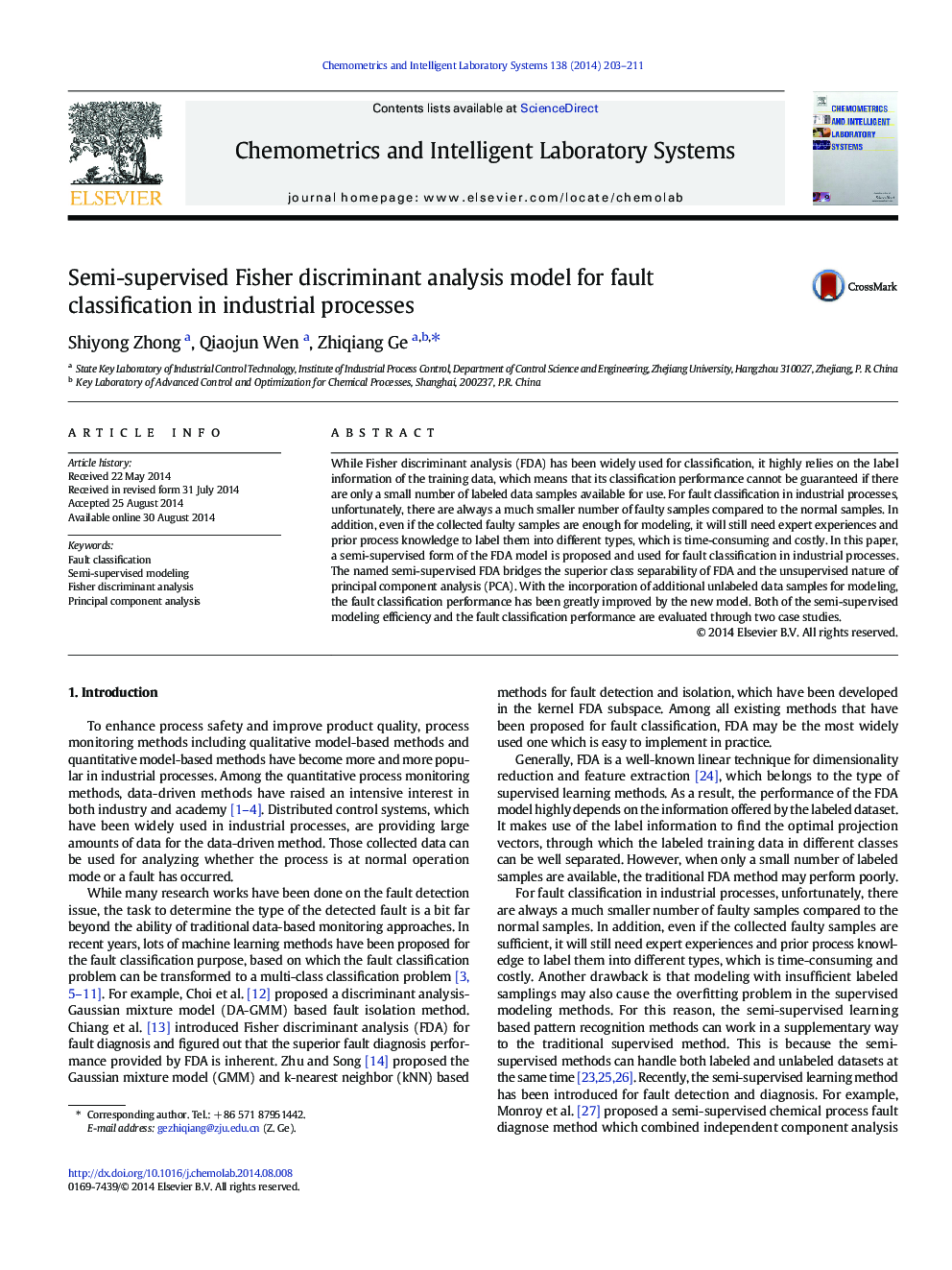| Article ID | Journal | Published Year | Pages | File Type |
|---|---|---|---|---|
| 1180748 | Chemometrics and Intelligent Laboratory Systems | 2014 | 9 Pages |
•A semi-supervised FDA model is proposed for fault classification.•Semi-supervised FDA is used for information extraction of the whole data.•Linear Gaussian discriminant function is employed on features for classification.•The superiority of the method is tested in a numerical example and the TE benchmark.
While Fisher discriminant analysis (FDA) has been widely used for classification, it highly relies on the label information of the training data, which means that its classification performance cannot be guaranteed if there are only a small number of labeled data samples available for use. For fault classification in industrial processes, unfortunately, there are always a much smaller number of faulty samples compared to the normal samples. In addition, even if the collected faulty samples are enough for modeling, it will still need expert experiences and prior process knowledge to label them into different types, which is time-consuming and costly. In this paper, a semi-supervised form of the FDA model is proposed and used for fault classification in industrial processes. The named semi-supervised FDA bridges the superior class separability of FDA and the unsupervised nature of principal component analysis (PCA). With the incorporation of additional unlabeled data samples for modeling, the fault classification performance has been greatly improved by the new model. Both of the semi-supervised modeling efficiency and the fault classification performance are evaluated through two case studies.
